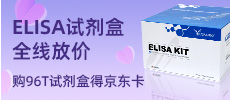Recombinant Human Scaffold attachment factor B1 (SAFB), partial
-
中文名称:人SAFB重组蛋白
-
货号:CSB-YP621873HU
-
规格:
-
来源:Yeast
-
其他:
-
中文名称:人SAFB重组蛋白
-
货号:CSB-EP621873HU
-
规格:
-
来源:E.coli
-
其他:
-
中文名称:人SAFB重组蛋白
-
货号:CSB-EP621873HU-B
-
规格:
-
来源:E.coli
-
共轭:Avi-tag Biotinylated
E. coli biotin ligase (BirA) is highly specific in covalently attaching biotin to the 15 amino acid AviTag peptide. This recombinant protein was biotinylated in vivo by AviTag-BirA technology, which method is BriA catalyzes amide linkage between the biotin and the specific lysine of the AviTag.
-
其他:
-
中文名称:人SAFB重组蛋白
-
货号:CSB-BP621873HU
-
规格:
-
来源:Baculovirus
-
其他:
-
中文名称:人SAFB重组蛋白
-
货号:CSB-MP621873HU
-
规格:
-
来源:Mammalian cell
-
其他:
产品详情
-
纯度:>85% (SDS-PAGE)
-
基因名:SAFB
-
Uniprot No.:
-
别名:DKFZp779C1727; glutathione S transferase fusion protein; HAP; HET; HSP27 ERE TATA binding protein; HSP27 ERE-TATA-binding protein; HSP27 estrogen response element-TATA box-binding protein; SAF B; SAF-B; SAF-B1; SAFB 1; SAFB; SAFB1; SAFB1_HUMAN; Scaffold attachment factor B1
-
种属:Homo sapiens (Human)
-
蛋白长度:Partial
-
蛋白标签:Tag type will be determined during the manufacturing process.
The tag type will be determined during production process. If you have specified tag type, please tell us and we will develop the specified tag preferentially. -
产品提供形式:Lyophilized powder
Note: We will preferentially ship the format that we have in stock, however, if you have any special requirement for the format, please remark your requirement when placing the order, we will prepare according to your demand. -
复溶:We recommend that this vial be briefly centrifuged prior to opening to bring the contents to the bottom. Please reconstitute protein in deionized sterile water to a concentration of 0.1-1.0 mg/mL.We recommend to add 5-50% of glycerol (final concentration) and aliquot for long-term storage at -20℃/-80℃. Our default final concentration of glycerol is 50%. Customers could use it as reference.
-
储存条件:Store at -20°C/-80°C upon receipt, aliquoting is necessary for mutiple use. Avoid repeated freeze-thaw cycles.
-
保质期:The shelf life is related to many factors, storage state, buffer ingredients, storage temperature and the stability of the protein itself.
Generally, the shelf life of liquid form is 6 months at -20°C/-80°C. The shelf life of lyophilized form is 12 months at -20°C/-80°C. -
货期:Delivery time may differ from different purchasing way or location, please kindly consult your local distributors for specific delivery time.Note: All of our proteins are default shipped with normal blue ice packs, if you request to ship with dry ice, please communicate with us in advance and extra fees will be charged.
-
注意事项:Repeated freezing and thawing is not recommended. Store working aliquots at 4°C for up to one week.
-
Datasheet :Please contact us to get it.
靶点详情
-
功能:Binds to scaffold/matrix attachment region (S/MAR) DNA and forms a molecular assembly point to allow the formation of a 'transcriptosomal' complex (consisting of SR proteins and RNA polymerase II) coupling transcription and RNA processing. Functions as an estrogen receptor corepressor and can also bind to the HSP27 promoter and decrease its transcription. Thereby acts as a negative regulator of cell proliferation. When associated with RBMX, binds to and stimulates transcription from the SREBF1 promoter.
-
基因功能参考文献:
- SAFB regulated the activity of NF-kappaB signaling in CRC by targeting TAK1 This novel mechanism provides a comprehensive understanding of both SAFB and the NF-kappaB signaling pathway in the progression of CRC and indicates that the SAFB-TAK1-NF-kappaB axis is a potential target for early therapeutic intervention in CRC progression PMID: 28912140
- Depletion of SAFB1 reduced FUS's localization to chromatin-bound fraction and splicing activity, suggesting SAFB1 could tether FUS to chromatin compartment thorough N-terminal DNA-binding motif. Moreover, FUS interacts with another nuclear matrix-associated protein, Matrin3. PMID: 27731383
- Data suggest that ERH interacts directly in nucleus with C-terminal Arg-Gly-rich region of SAFB1/SAFB2 and this multimer co-localizes in insoluble nuclear fraction; binding of ERH reverses inhibition exerted by SAFB1/SAFB2 on SRPK1. (ERH = enhancer of rudimentary homolog protein; SAFB = scaffold attachment factor B; SRPK1 = splicing kinase SR protein kinase-1) PMID: 28627136
- The expression of coding and non-coding genes with SAFB1 cross-link sites was altered by SAFB1 knockdown. The isoform-specific expression of neural cell adhesion molecule (NCAM1) and ASTN2 was influenced by SAFB1. PMID: 26694817
- Single depletion of either SAFB1 or SAFB2 leads to an increase in expression of the other SAFB protein. PMID: 26273616
- reveals an unexpected role of SUMO-1 and SAFB in the stimulatory coupling of promoter binding, transcription initiation and RNA processing PMID: 25800734
- SAFB1 formed a complex with the histone methyltransferase EZH2. PMID: 23893242
- Data indicate that scaffold attachment factor SAFB1 is transiently recruited to DNA breaks in a poly(ADP-ribose)-polymerase 1- and poly(ADP-ribose)-dependent manner. PMID: 24055346
- Results indicate that SAFB1 and SAFB2 are crucial repressors for ERalpha dynamics in association with the nuclear matrix and that their synergistic regulation of ERalpha mobility is sufficient for inhibiting ERalpha function. PMID: 22566185
- transcriptional repressor SAFB1 is modified by both SUMO1 and SUMO2/3, and this modification is necessary for its full repressive activity. PMID: 21527249
- Data show that binding of p53 to SAFB1 had a significant functional outcome, since SAFB1 was shown to suppress p53-mediated reporter gene expression. PMID: 21130767
- This study shows that low SAFB protein levels predict poor prognosis of breast cancer patients, suggesting critical functions of SAFB1 and SAFB2 in breast cancer cells. PMID: 19137425
- Study confirms the primary role of SAFB1/SAFB2 as corepressors and also uncovers a previously unknown role for SAFB1 in the regulation of immune genes and in estrogen-mediated repression of genes. PMID: 19901029
- HSP27 is a nuclear speckle component in unstressed cells in tissue culture. It is also associated with the nucleolar compartment. PMID: 12837281
- REVIEW: possibility that SAFB1 and SAFB2 are novel breast tumor suppressor genes, and how they might function in this role, are discussed PMID: 14587024
- HSP27 expression may have useful diagnostic use for the prognosis of mouth squamous cell carcinoma. PMID: 14702179
- SAFB1 represses ERalpha activity via indirect association with histone deacetylation and interaction with the basal transcription machinery PMID: 15066997
- SAFB1 was shown to interact directly with the nuclear receptor corepressor N-CoR. PMID: 16195251
- SAFB1 interacts in pull-down assays not only with PPARgamma but also with all nuclear receptors tested PMID: 16326836
- SAFB may direct the reorganization and segregation of nuclear RNA and DNA prior to endonuclease-mediated DNA cleavage. PMID: 17643427
- Over expression of HSP27 is associated with intrahepatic cholangiocarcinoma PMID: 18154639
- hXOR is a tumor suppressor-targeted gene and the phosphorylation of SAFB1 is regulated by OSM, which provides a molecular basis for understanding the role of SAFB1-regulated hXOR transcription in cytokine stimulation and tumorigenesis PMID: 18772145
- SAFB1 is not likely to be causative of the hereditary breast cancer syndrome in west Swedish breast cancer families PMID: 19077293
- Importance of ERE-BP as an attenuator of normal ERalpha signaling in vivo and is a novel target for modulation by selective estrogen receptor modulators. PMID: 19106221
- The enzymatic activity of SR protein kinases 1 and 1a is negatively affected by interaction with scaffold attachment factors B1 and 2. PMID: 19674106
显示更多
收起更多
-
亚细胞定位:Nucleus.
-
组织特异性:Ubiquitous. Expressed at high levels in the CNS and at low levels in the liver. Expressed in a wide number of breast cancer cell lines.
-
数据库链接:
Most popular with customers
-
Recombinant Human Tumor necrosis factor receptor superfamily member 11B (TNFRSF11B) (Active)
Express system: Mammalian cell
Species: Homo sapiens (Human)
-
Recombinant Human Glypican-3 (GPC3) (G537R), partial (Active)
Express system: Mammalian cell
Species: Homo sapiens (Human)
-
Recombinant Human Tumor necrosis factor receptor superfamily member 8 (TNFRSF8), partial (Active)
Express system: Mammalian cell
Species: Homo sapiens (Human)
-
Recombinant Mouse Prolactin receptor (Prlr), partial (Active)
Express system: Mammalian cell
Species: Mus musculus (Mouse)
-
Recombinant Human Tissue factor pathway inhibitor (TFPI), partial (Active)
Express system: Mammalian cell
Species: Homo sapiens (Human)
-
Recombinant Human Cannabinoid receptor 1 (CNR1)-VLPs (Active)
Express system: Mammalian cell
Species: Homo sapiens (Human)
-
Recombinant Human Claudin-6 (CLDN6)-VLPs (Active)
Express system: Mammalian cell
Species: Homo sapiens (Human)
-
Recombinant Human Microtubule-associated protein tau (MAPT) (Active)
Express system: Mammalian cell
Species: Homo sapiens (Human)


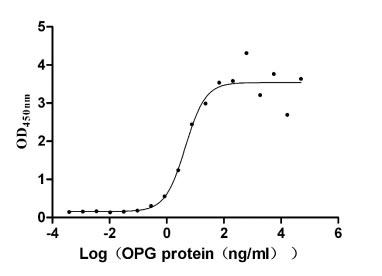
-AC1.jpg)
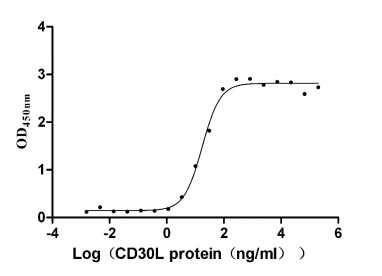
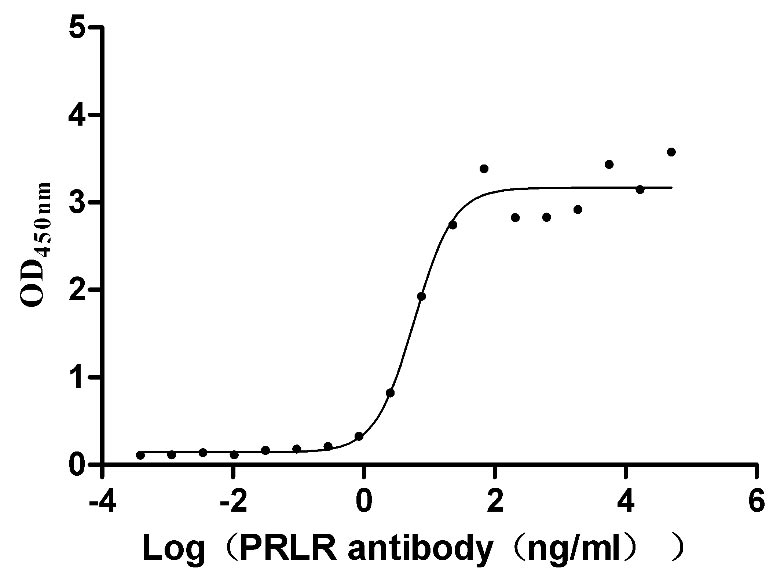
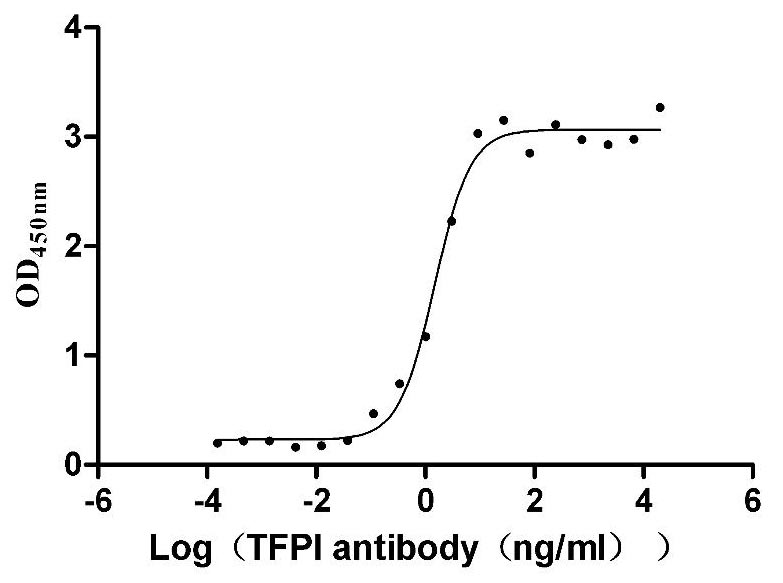
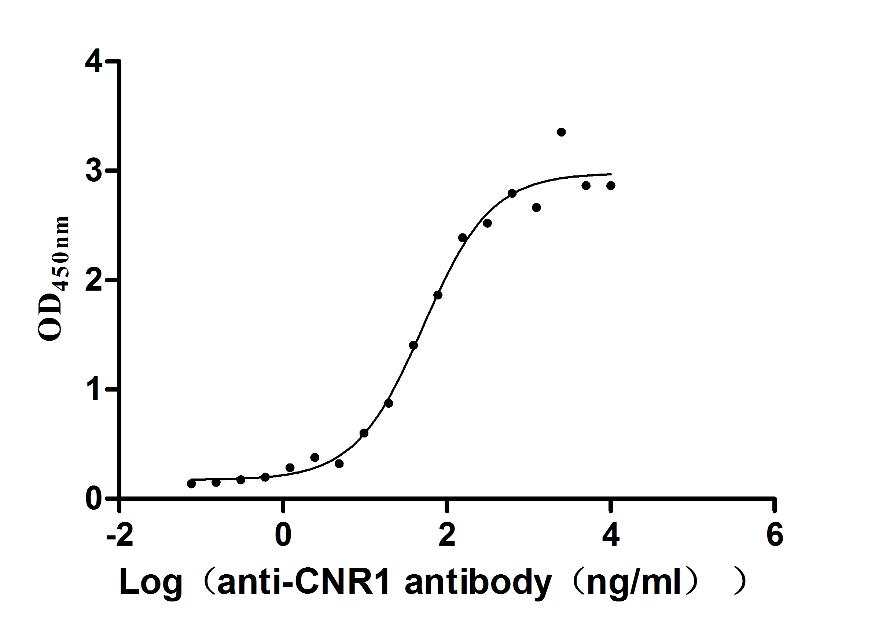
-AC1.jpg)
-AC1.jpg)
